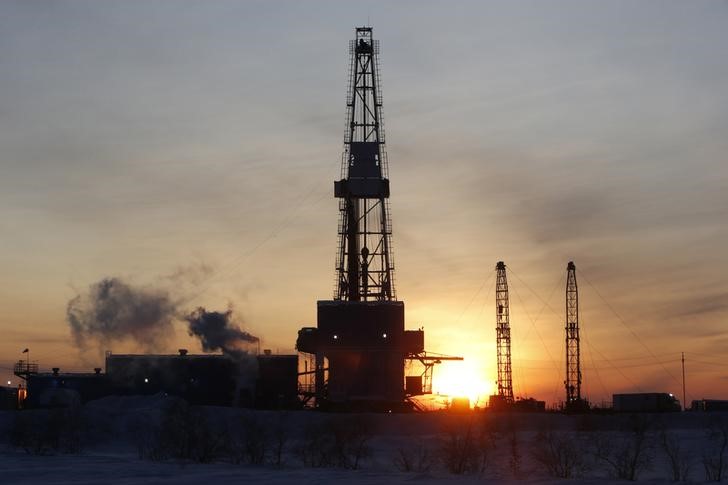TSX futures subdued with key U.S. inflation data ahead
Investing.com -- Oil prices fell Monday after a group of top producers announced plans to further increase production in September, while concerns over a cooling U.S. economy and trade tariffs also weighed.
At 08:15 ET (12:15 GMT), Brent oil futures for September fell 1.8% to $68.38 a barrel and West Texas Intermediate crude futures fell 2.1% to $65.89 a barrel.
Both contracts registered gains last week as the U.S. threatened more sanctions on Russian oil, which could tighten global supplies.
OPEC+ agrees to output hike in Sept
The Organization of Petroleum Exporting Countries and allies, a group known as OPEC+, agreed on Sunday to raise oil production by 547,000 barrels per day (bpd) in September, a similar margin as that agreed for August.
The hike marked a sixth consecutive month that the cartel agreed to increase production, and comes as the cartel steadily winds down two years of supply cuts.
The move marks a full and early reversal of OPEC+’s largest tranche of output cuts, amounting to about 2.5 million bpd, or about 2.4% of world demand.
The OPEC+ had hiked production by about 548,000 bpd in August and about 411,000 bpd in July.
The OPEC’s decision to increase production pushed up market fears of increased supplies in the coming months, which could in turn offset the impact of tighter U.S. sanctions on Russia.
That said, "we believe the group is finished with its supply hikes, as we move out of the stronger summer demand period and inventories start to rise," said analysts at ING, in a note.
"However, much also depends on what happens to Russian oil flows. The Trump administration threatens penalties on India for purchasing Russian energy. This puts in the region of 1.7m b/d of supply at risk if Indian refiners stop buying Russian oil. If there are no other willing buyers for this oil, it would erase the expected surplus through the fourth quarter and 2026. It would also possibly provide OPEC+ the opportunity to start unwinding the next tranche of supply cuts totalling 1.66m b/d."
Weak U.S. data fuels demand concerns
Markets were also on edge over potential cooling in U.S. fuel demand, especially as nonfarm payrolls data pointed to deterioration in the labor sector.
The reading came amid heightened uncertainty over the impact of Trump’s trade tariffs, a bulk of which will take effect in the coming days.
Weak purchasing managers index data also pointed to a deterioration in U.S. business activity, which bodes poorly for oil demand.
Russian sanction threat provides support
Oil prices had enjoyed a positive week last week after But U.S. President Donald Trump threatened to tariff major buyers of Russian oil, specifically China and India, as he tried to coax Moscow to end the conflict in Ukraine.
Goldman Sachs on Sunday reiterated its oil price forecast with Brent averaging $64 per barrel in the fourth quarter of 2025 and $56 in 2026, but expects an increasing range of risks to its baseline estimates from recent developments.
"Increasing pressure on Russia and Iran sanctioned oil supply poses an upside risk to our price forecast, especially given the faster-than-expected normalization in spare capacity," the investment bank said in an August 3 note.
However, Goldman flagged a downside risk to its 800,000 barrels per day average annual demand growth forecast in 2025-2026 due to the increase in U.S. tariff rates, threats of additional secondary tariffs and weak U.S. economic activity data.
Concerns over the U.S. imposing secondary tariffs on countries that import Russian oil have speculators becoming more constructive towards the market, added ING.
"The managed money net long in ICE Brent increased by 33,959 lots to 261,352 lots. This was driven fairly evenly by fresh buying, along with short covering."
Ambar Warrick contributed to this article
